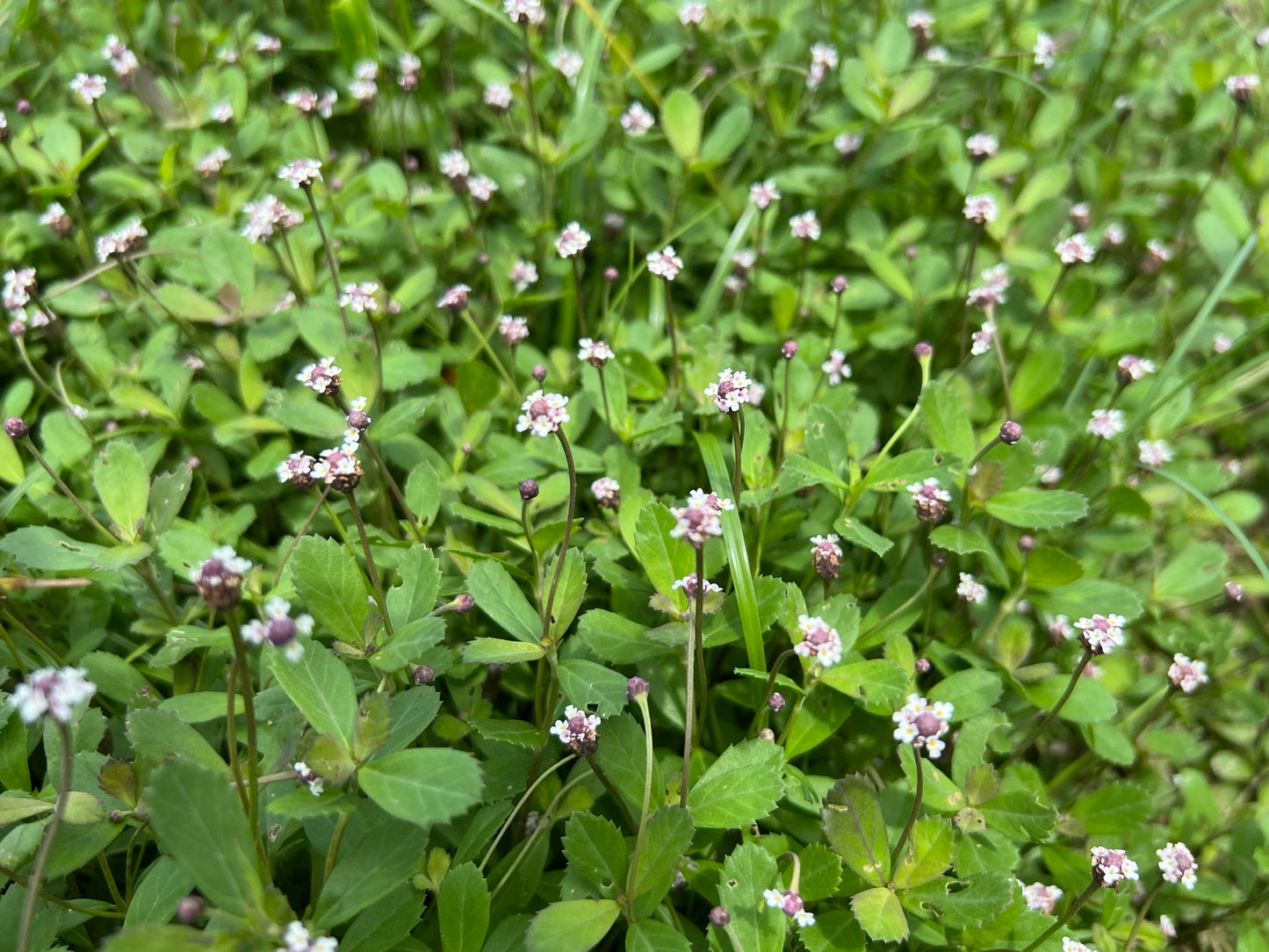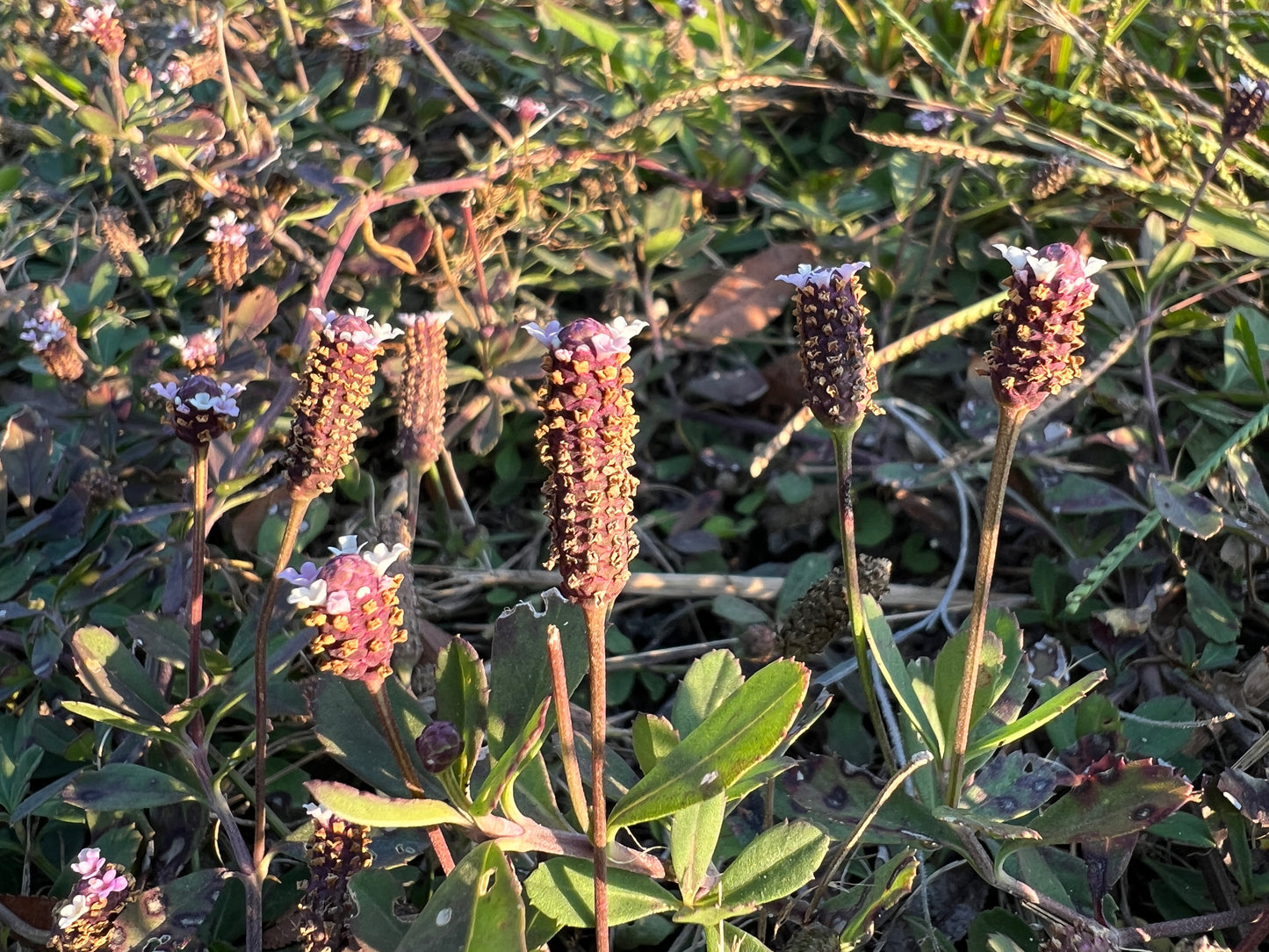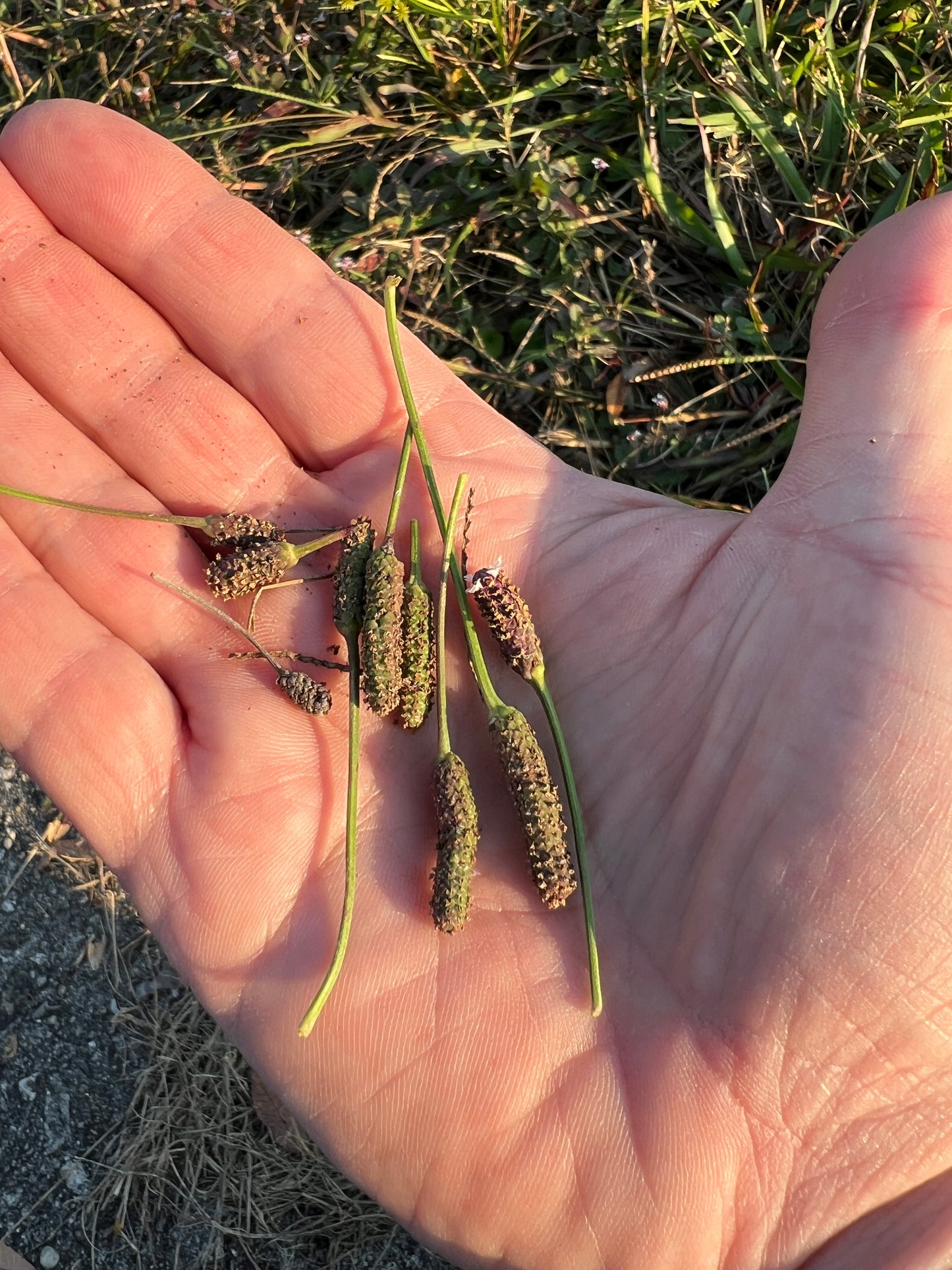Floridaseeds
Frogfruit Groundcover 50 Seeds Phyla nodiflora
Frogfruit Groundcover 50 Seeds Phyla nodiflora
Couldn't load pickup availability
Phyla nodiflora, commonly known as frogfruit or turkey tangle fogfruit, is a low-growing perennial plant that belongs to the Verbenaceae family. This plant is native to the southeastern United States and is found in various habitats such as wetlands, meadows, and along the edges of water bodies.
Here are some key characteristics of Phyla nodiflora:
Habit and Growth: Frog fruit is a prostrate or spreading plant, meaning it grows close to the ground and forms a dense mat. It typically reaches a height of about 6 to 12 inches (15 to 30 cm).
Leaves: The leaves of Phyla nodiflora are simple, opposite, and serrated. They are generally ovate to lanceolate in shape and can vary in size. The leaves are often hairy and may have a slightly aromatic scent when crushed.
Flowers: The small flowers are arranged in clusters and can be white or lavender in color. The flowering period for Phyla nodiflora typically occurs from spring to fall.
Ecological Importance: Frog fruit is known for its ecological importance as it provides nectar for pollinators such as bees and butterflies. It is also a host plant for the Phaon Crescent butterfly (Phyciodes phaon).
Uses: In addition to its ecological role, frog fruit is sometimes used in landscaping for ground cover due to its spreading habit and tolerance for various soil conditions. It is also known for its drought tolerance.
Growing Instructions
The seeds are in small fruit clusters. Separate the seeds and chaff from the fruit clusters. The seeds like moist, well-drained soil. Use a sterile seed starter mix, if available. It prevents soil pathogens from damaging the seeds and the seedlings. If not available, then make a mixture of half potting soil and half sand, perlite or vermiculite. 2. Put the soil in a pot. 3. Sow the seeds and chaff on the surface of the soil. 4. Cover the seeds with a thin layer of soil. 5. Water the seeds. Keep the soil moist but not wet. 6. Place the pots in an area with warm temperatures in full sun or part shade. 7. When the seedlings are a few inches tall, they can be transplanted.
Materials
Materials
Shipping & Returns
Shipping & Returns
Dimensions
Dimensions
Care Instructions
Care Instructions
Share



















